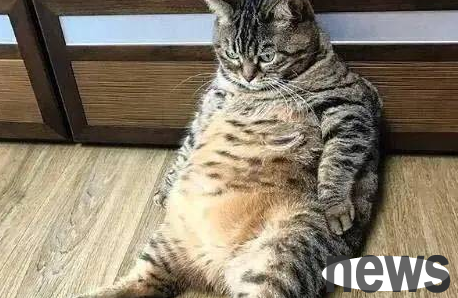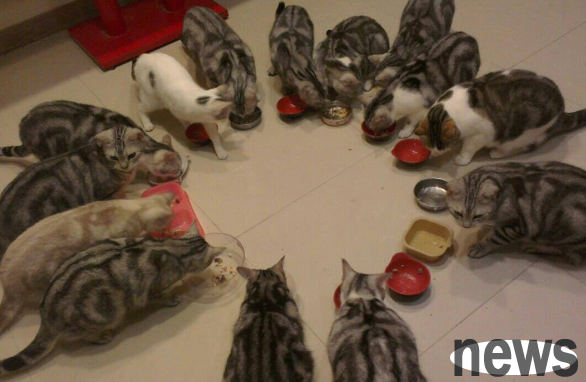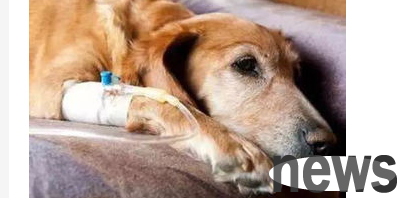Treatment of cat cough and asthma diseases, application of inhalation treatment and drug selection!
Treatment of cat cough and asthma diseases, application of inhalation treatment and drug selection! There are specific treatments for specific diseases. Although injections and infusions are common treatment methods, they are not suitable for all diseases. The direct injection or oral method of some drugs is not effective, especially for respiratory diseases. Inhalation treatment is often an effective method. Inhalation treatment is to disperse drugs or water into mist particles suspended in gas through an inhalation device, and deposit it in the respiratory tract and (or) lungs through inhalation, thereby achieving the effect of local treatment of the respiratory tract. Because atomized inhalation has the advantages of fast drug action, low dose, high local drug concentration and few systemic adverse reactions, atomized inhalation has become an important auxiliary treatment measure in the treatment of respiratory diseases.

1. Advantages of inhalation therapy
Atomization inhalation therapy can inhal air dampness and medicine liquid into the respiratory tract to achieve the treatment purposes of respiratory mucosa moisturization, anti-inflammatory and expectorant phlegm, antispasmodic, and anti-asthma. Compared with oral methods, it has the advantages of small dosage, quick effect, few side effects and easy use, and has significant therapeutic effects. It has high local drug concentration in respiratory tract, which can avoid or reduce systemic hormone use. Sick cats only need to passively cooperate under the owner's owner's Baoding to ensure the performance of the drug. Therefore, it has become a more ideal way of drug delivery in today's veterinary clinical practice. At present, ultrasonic atomizers are widely used in cats. They use ultrasonic acoustic energy to turn the medicine into fine aerosols and inhaled from the respiratory tract to achieve the purpose of treatment.
Dispossession through aerosolization and inhalation can help relieve bronchospasm, dilute sputum, and prevent and treat respiratory infections. In many respiratory diseases, such as chronic obstructive pulmonary disease (COPD), bronchial asthma, atomized inhalation can be used for treatment.
2. Indications
1. Cough-asthma disease
The cough-asthma in cats is mainly seen in upper respiratory tract infections and lower respiratory tract infectious diseases. Upper respiratory tract infections are mainly nasopharyngeal infections, and lower respiratory tract infections include some inflammations in the bronchial, bronchioles and alveoli.
In terms of the pathogens of inflammatory infection, the main ones are bacteria, viruses, molds, mycoplasma, chlamydia, etc., so the principles for treating this type of cough and asthma are antibacterial and anti-inflammatory, swelling, phlegm-relieving, cough and anti-asthma, anti-viral, etc. If you have a cough and asthma caused by bacterial infection, you can use gentamicin 10,000 IU, budesonide 1 mg, α-chymotrypsin 0.1 mg, and 1% sputum easy-to-clean (note that the two drugs, α-chymotrypsin and sputum easy-to-clean, enter the bronchial as a foreign object, which can stimulate bronchospasm. Therefore, it is best to use bronchodilator first or use it at the same time as bronchodilator). Add distilled water to 5ML, and absorb it once, twice a day. If there is viral infection, add 20 mg of viral azole. There are also some cough and asthma caused by allergic causes, which are often treated in clinical practice by nebulizing some glucocorticoids and other drugs. To simply relieve phlegm and relieve cough, you can also use 10% phlegm and 20ML of sodium bicarbonate, inhalation once, twice a day. Some veterinarians have also achieved good results in the treatment of acute cough and asthma caused by viral upper respiratory tract infections by oral treatment of dextromethorphan hydrobromide and pseudoephedrine hydrochloride.
2. Diabetes
The treatment of diabetes has not made any breakthroughs so far. In clinical practice, dietary control, oral antidiabetic drugs and supplementation of exogenous insulin are still the main measures. The traditional method of supplementing exogenous insulin is subcutaneous or intramuscular injection, but long-term injections have caused many inconveniences to sick dogs and cats. Considering the good permeability of the alveolar wall, clinical trials have shown that insulin aerosol can effectively reduce fasting and postprandial blood sugar, no obvious toxic reaction, and does not affect respiratory function. Insulin aerosol is expected to become an alternative method for subcutaneous insulin injection.

III. Other applicable drugs
1. Anticholinergic drugs
Commonly used drugs are isopratrophinium, with an aqueous solution concentration of 0.025%. , add equal amount of normal saline and atomize and inhale, or directly inhale the stock solution. 10% to 30% of the inhaled dose is deposited in the lungs, and the gastrointestinal mucosa absorbs less, which is highly selective for respiratory smooth muscles. The effect takes effect 10 to 30 minutes after inhalation, and the effect reaches its peak in 1 to 2 hours. After one inhalation, the effect can be maintained for 6 to 8 hours. It is mainly used for the treatment of acute COPD attacks and acute bronchial asthma attacks.
2, β2 receptor agonist
Currently, commonly used drugs in clinical practice are albutamol. The aqueous solution concentration is 0.05%, and after atomization, aerosol particles with a diameter of 2~4 μm are formed. After inhalation, 10%~20% can reach the lower respiratory tract. The conventional dose is 2 ml of drug plus equal amount of normal saline to inhale. It can take effect 5 minutes after inhalation, reach its peak in 15 minutes, and the efficacy can be maintained for 4 to 6 hours. It is mainly used in diseased cats with severe bronchial asthma attacks and COPD with obvious bronchospasm. Because such drugs also have partial agonism on the beta receptors in the heart and skeletal muscle.
3. Combination medication
In order to enhance the effect of atomization inhalation, or shorten the time for atomization inhalation, the doctor will mix multiple drug solutions or suspensions and let the patient inhale them at the same time. For example, the combined use of anticholinergic drugs and β2 receptor agonists has a synergistic effect, and the effect of dilating the bronchus is stronger, and it has the characteristics of rapid effect and lasting effect. Clinically, 2 ml of each of the above two drugs can be used for atomization and inhalation. However, when mixing and inhaling the liquid, you must pay attention to the physical and chemical characteristics and compatibility of various drugs, whether there are compatibility taboos, etc.
Generally speaking, isopratropium bromide, albutamol, ambroxol, and tobramycin can be compatible. Budesonide can be used in combination with terbutalin, salbutamol, sodium cromoglyceride, ipratropium bromide, fenotol, and acetylcysteine, but it is not recommended to use in combination with sodium cromoglyceride, because after the two are mixed, a complex similar to oily and amorphous can be produced and precipitated. Tobramycin cannot be combined with budesonide and sodium cromoglycerate.




